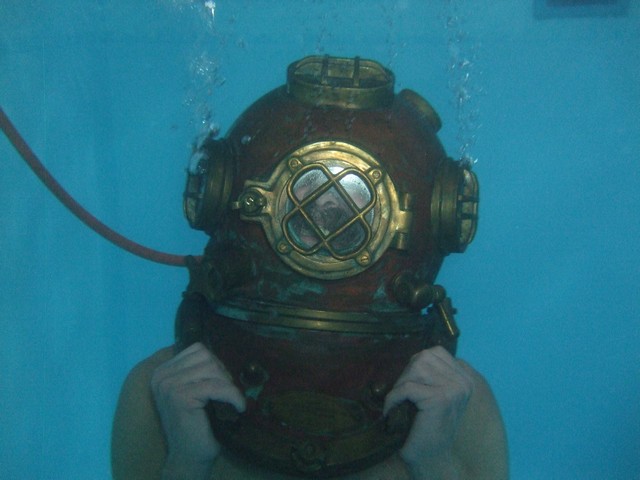Nudibranche





Mobula birostris

Charles and John Deane were the inventors of the diving helmet.
Diving helmets are worn mainly by professional divers engaged in surface supplied diving, though many models can be adapted for use with scuba equipment.
The helmet seals the whole of the diver’s head from the water, allows the diver to see clearly underwater, provides the diver with breathing gas, protects the diver’s head when doing heavy or dangerous work, and usually provides voice communications with the surface (and possibly other divers). If a helmeted diver becomes unconscious but is still breathing, the helmet will remain in place and continue to deliver breathing gas until the diver can be rescued. In contrast, the scuba regulators typically used by recreational divers must be held in the mouth, otherwise it will usually fall out of an unconscious diver’s mouth and resulting in drowning.
Before the invention of the demand regulator, all diving helmets used a free-flow design. Gas was delivered at a constant rate, regardless of the diver’s breathing, and flowed out through an exhaust valve. Most modern helmets incorporate a demand valve, which is essentially a scuba regulator. This means that the helmet only delivers breathing gas when the diver inhales. Free-flow helmets use much larger quantities of gas than demand helmets, which can cause logistical difficulties and is very expensive when special breathing gases (such as heliox) are used. They also produce a constant noise inside the helmet, which can cause communication difficulties. Free-flow helmets are still preferred for hazardous materials diving, because their positive-pressure nature can prevent the ingress of hazardous material in case the integrity of the suit or helmet is compromised. They also remain relatively common in shallow-water air diving, where gas consumption is of little concern, and in nuclear diving because they must be disposed of after some period of use due to irradiation; free-flow helmets are significantly less expensive to purchase and maintain than demand types.
Most modern helmet designs are sealed at the neck using a neoprene “neck dam” which is independent of the suit, allowing the diver his choice of suits depending on the dive conditions. When a neck dam is installed into a drysuit, however, the entire body is isolated from the surrounding liquid, giving an additional degree of warmth and protection. When divers must work in hazardous environments such as sewage or dangerous chemicals, a helmet (usually of the free-flow type) is sealed to a special drysuit (usually made of thick rubber) to completely isolate and protect the diver. This equipment is the modern equivalent of the historic Mark V “Standard Diving Dress“, and is commonly referred to as “heavy gear.”
Source: http://en.wikipedia.org/wiki/Diving_helmet

Rob’s handmade underwater housing.

Bali, The Island of Paradise

A beautiful place to stay. For more information visit http://www.balivillarenting.com/

These villas were the starting point for our exciting leptocephalus discovery, good accommodation and a lovely dive center!